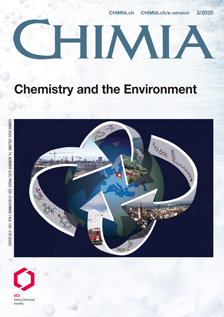Enzyme Kinetics of Organic Contaminant Oxygenations
DOI:
https://doi.org/10.2533/chimia.2020.108PMID:
32197667Keywords:
Biodegradation, Catalytic cycles, Non-heme fe ii oxygenases, O2 uncouplingAbstract
Enzymatic oxygenations initiate biodegradation processes of many organic soil and water contaminants. Even though many biochemical aspects of oxygenation reactions are well-known, quantifying rates of oxidative contaminant removal as well as the extent of oxygenation remains a major challenge. Because enzymes use different strategies to activate O2, reactions leading to substrate oxygenation are not necessarily limiting the rate of contaminant removal. Moreover, oxygenases react along unproductive pathways without substrate metabolism leading to O2 uncoupling. Here, we identify the critical features of the catalytic cycles of selected oxygenases that determine rates and extents of biodegradation. We focus most specifically on Rieske dioxygenases, a subfamily of mononuclear non-heme ferrous iron oxygenases, because of their ability to hydroxylate unactivated aromatic structures and thus initiate the transformation of the most persistent organic contaminants. We illustrate that the rate-determining steps in their catalytic cycles range from O2 activation to substrate hydroxylation, depending on the extent of O–O cleavage that is required for generating the reactive Fe-oxygen species. The extent of O2 uncoupling, on the other hand, is highly substrate-specific and potentially modulated by adaptive responses to oxidative stress. Understanding the kinetic mechanisms of oxygenases will be key to assess organic contaminant biotransformation quantitatively.
Downloads
Published
Issue
Section
License
Copyright (c) 2020 Charlotte E. Bopp, Hans-Peter E. Kohler, Thomas B. Hofstetter

This work is licensed under a Creative Commons Attribution-NonCommercial 4.0 International License.







